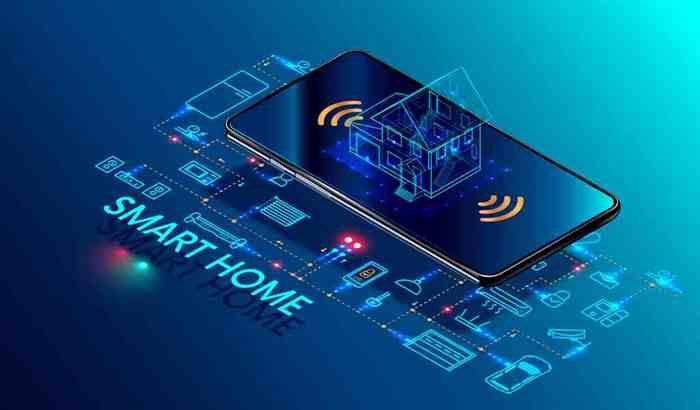Content
In simplest terms, edge computing moves some portion of storage and compute resources out of the central data center and closer to the source of the data itself. Rather than transmitting raw data to a central Unit testing data center for processing and analysis, that work is instead performed where the data is actually generated — whether that’s a retail store, a factory floor, a sprawling utility or across a smart city.
This benefit is vital for industries that require quick expansions into regions with limited connectivity. The illustration below presents a more detailed architecture and shows components relevant to each edge node.
The initial use cases were driven by a desire to leverage a platform that delivered the flexibility and simple tools that cloud computing users have become accustomed to. For locations with subpar internet connectivity, being able to store and process data at the edge improves reliability when the cloud connection is disrupted. Moving data processing and analysis to the edge helps speed system response, enabling faster transactions and better experiences that could be vital in near real-time applications, like autonomous vehicle operation. An IT edge is where end devices connect to a network to deliver data and receive instructions from a central server, either a data center or thecloud. While this model worked in the past, modern devices generate so much data that companies require expensive equipment to maintain optimal performance. By combining edge and cloud, you can utilise the power of distributed systems by processing data on devices themselves, which then send it to the cloud.

IoT applications and world-class expertise to help you build and maintain secure projects for the Internet of Things. Hear from Juniper Networks CEO Rami Rahim as he visits the lab to hear about the powerful performance of the 400G-capable PTX10008 router.
Different Types Of Cloud Service Models
Each data center processes and stores data locally and is usually configured with the ability to replicate its data to other locations. The individual locations are called points of presence and generally include servers, routers, network switches, and other interfacing equipment. Edge computing, with its emphasis on data collection and real-time computation, can contribute to the success of data-intensive intelligent applications.
As new edge computing capabilities emerge, we see a changing paradigm for computing—one that is no longer necessarily bound by the need to build centralized data centers. Edge cloud computing augments cloud computing with edge computing for certain types of workloads. MEC also offers cloud-computing capabilities and an IT service environment at the edge of the network. You typically implement MEC with data centers that are distributed at the edge. Applications at the edge require a high bandwidth and low latency environment. To achieve that service providers create distributed data centers, or distributed clouds.
Edge Computing Vs Cloud Computing
Not only will each of these classes, in its view, maintain its own edge computing platform, but the geography of these platforms will separate from one another, not converge, as this HPE diagram depicts. Here is where the viability of the edge computing model has yet to be thoroughly tested.
Definition: What Are the Composable Infrastructure Use Cases?
One composable infrastructure use case is making a private cloud like a public cloud. Other use cases are edge computing and data analysis. https://t.co/FfWVPrNYM5— SDxCentral News (@sdxcentral) December 10, 2021
Network Function Virtualization is at its heart the quintessential edge computing application because it provides infrastructure functionality. Telecom operators are looking to transform their service delivery models by running virtual network functions as part of, or layered on top of, an edge computing infrastructure. To maximize efficiency and minimize cost/complexity, running NFV on edge computing infrastructure makes sense. A car equipped with edge devices can gather data from various sensors and have real-time responses to situations on the road. Deploying edge solutions can improve the way vital healthcare machines operate, including portable EKG devices, sensors for monitoring temperature, and glucose monitors. Fast data processing can also save precious seconds for remote patient monitoring.
Devices At The Edge: Harnessing The Potential
In 2018, we will continue to see the trend of cloud and edge computing being used in tandem, advancing the reach and scope of what cloud networks can provide. Companies like AWS, Google and Microsoft have recognized the future of computing on the edge. They are all expanding their data centers around the world so that they can be more decentralized and be closer to devices, regardless of location. StackPath’s Temitim believes that point to be an emerging concept called the edge cloud — effectively a virtual collection of multiple edge deployments in a single platform. This platform would be marketed at first to multichannel video distributors looking to own their own distribution networks, and cut costs in the long term.

Replaced “mobile” with “multi-access” in response to emerging benefits of the technology that reached beyond mobile networks and into Wi-Fi and fixed access technologies. Some processes require real-time processing to perform their most basic functions.
Moreover, edge computing systems must provide actions to recover from a failure and alerting the user about the incident. To this aim, each device must maintain the network topology of the entire distributed system, so that detection of errors and recovery become easily applicable. Other factors that may influence this aspect are the connection technologies in use, which may provide different levels of reliability, and the accuracy of the data produced at the edge that could be unreliable due to particular environment conditions. As an example an edge computing device, such as a voice assistant may continue to provide service to local users even during cloud service or internet outages. First, it must take into account the heterogeneity of the devices, having different performance and energy constraints, the highly dynamic condition, and the reliability of the connections compared to more robust infrastructure of cloud data centers. Moreover, security requirements may introduce further latency in the communication between nodes, which may slow down the scaling process. Edge computing is a distributed computing paradigm that brings computation and data storage closer to the sources of data.
This is done so that data, especially real-time data, does not suffer latency issues that can affect an application’s performance. In addition, companies can save money by having the processing done locally, reducing the amount of data that needs to be processed in a centralized or cloud-based location. Edge computing is a distributed computing framework that brings enterprise applications closer to data sources such as IoT devices or local edge servers.
Application Access
The vast Internet community is on pace to include 41.6 billion connected IoT devices by 2025, according toa forecast by International Data Corporation . And it will take a lot of computing power to reach all of these devices. A key component for user satisfaction is serving the right type of content each time.
Edge computing addresses those use cases that cannot be adequately addressed by the centralization approach of cloud computing, often because of networking requirements or other constraints. The ongoing rollout of 5G networks often depends on vRAN as a path to simplify operations, serve more devices, and meet the needs of more demanding applications. An edge platform can help deliver consistency of operations and app development. It should support interoperability to account for a greater mix of hardware and software environments, as opposed to a datacenter.

Leverage an edge computing solution that nurtures the ability to innovate and can handle the diversity of equipment and devices in today’s marketplace. No matter which variety of edge computing interests you — cloud edge, IoT edge or mobile edge — be sure that you find a solution that can help you accomplish the following goals. Today, less than 10 percent of enterprise-generated data is created and processed at the edge,according to Gartner; but by 2025, that will grow to 75 percent, Gartner predicts.
System-on-Modules such as the Digi ConnectCore® 8Xprovide multiple processing units to perform AI and Computer Vision tasks at the edge of the network. Powerful GPU and CPU cores to run neural networks, and support for OpenCL/OpenCV for machine learning and machine vision applications, enable real time performance at low power at the edge. The compact Digi ConnectCore 8X, a system-on-module based on the NXP i.MX 8X application processor, also offers the benefits of the Digi SMTplus®surface-mount form factor, which reduces manufacturing costs while increasing design flexibility. Additionally, edge computing has the ability to drive down computing costs for organizations and can be a cost-effective way to ensure data recency, accuracy, speed and quality. By only sending data short distances and completing much of the computing in a decentralized way, companies can process data much more efficiently. Raw data is managed at the edge of a network and, in turn, computing power and bandwidth requirements are lower, leading to lowered expenses. When managing massive amounts of data produced by sensors in an industrial setting, the ability to process, analyze and sort data prior to sending it can lead to big savings in network and computing resources.
An intelligent edge: A game changer for IoT – TechTarget
An intelligent edge: A game changer for IoT.
Posted: Wed, 15 Sep 2021 07:00:00 GMT [source]
There are many drivers for edge computing, other than sheer data-related and IoT-related ones. Moreover, most of the so-called next-generation applications that will really need extremely low latency and extremely high availability are not here yet. And it’s not certain if they will be here anytime soon, even if 5G is what many of them are waiting for. There simply isn’t any guarantee that things like autonomous vehicles or virtual and augmented reality at scale will indeed become a reality soon.
- Adopting edge computing is a high priority for many telecommunications service providers, as they move workloads and services toward the network’s edge.
- Edge devices locally store and process data and work with edge data centers to overcome any intermittent connectivity issues.
- Terminology varies, so you’ll hear the modules called edge servers and “edge gateways,” among others.
- Centralization allowed resources to be highly scalable and shared more efficiently, while maintaining control and enterprise security.
- Today we are seeing almost the same thing happening again with the edge computing providers.
- Compare edge cloud, cloud computing and edge computing to determine which model is best for you.
When you have your software and code, you can deploy as many VMs or container instances as you want to the cloud edge. You can also run code at the edge with serverless functions, a new offering from cloud and edge providers that doesn’t require developers to manage and update any underlying operating systems or software. Deploying edge computing workloads is easy, especially if you’re familiar with setting up a content delivery network . The main difference is that, with edge computing, you’re distributing software definition edge computing and code instead of static assets, as you would with a CDN. Many also tout lower costs and fast deployment time, for instance when deploying small micro data centers in those environments such as retail stores or fast-food restaurants where you also can save space and typically don’t have too many IT people around. Vendors of edge computing equipment of course aren’t waiting because of the earlier-mentioned use cases and scenarios in which edge already makes sense and since it’s not certain what use cases we’ll see.

